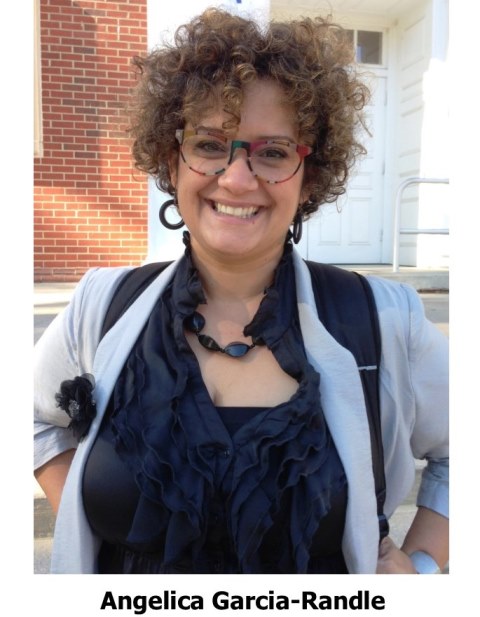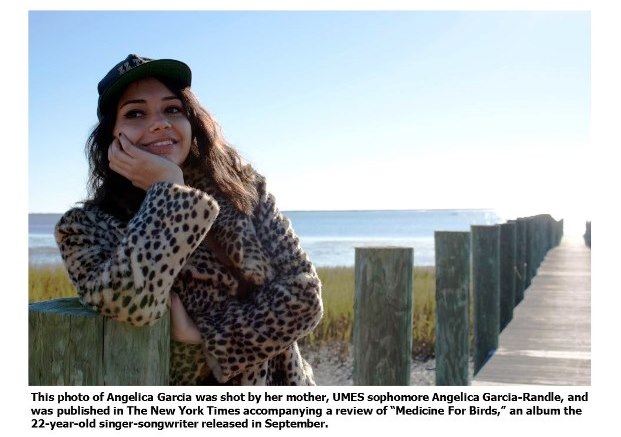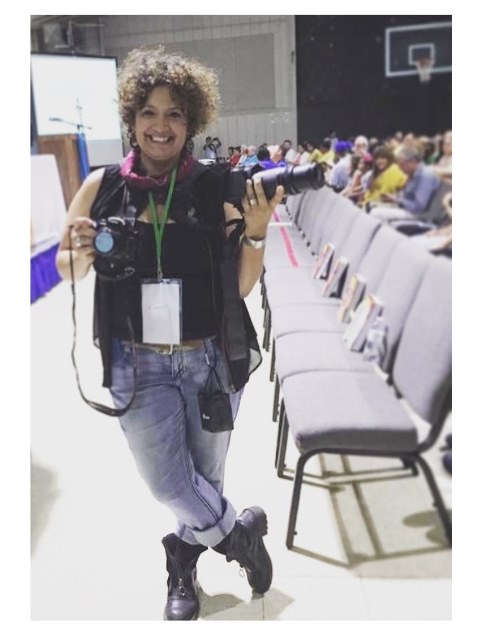Friday, November 18, 2016

PRINCESS ANNE, MD. – (Nov. 18, 2016) – What does a Gen X dynamo do for an encore after a song she recorded as a teenager made Billboard’s Top 40 and a recent photo she snapped was published in The New York Times?
Angelica Garcia-Randle enrolled in the University of Maryland Eastern Shore to pursue a degree in applied design.
The most recent accomplishment in the 44-year-old sophomore’s whirlwind life occurred in mid-September, when a young singer’s whimsical portrait accompanied a music critic’s review of “Medicine For Birds,” a new indie rock album.
“It’s amazing to me to see one of my photos appear in The New York Times,” she said. “I wanted to faint.”
She scooped up several copies of the pricey Sunday edition at a convenience store near her Accomac, Va. home, where she lives with her husband.
“I felt so blessed,” Garcia-Randle said. “It was a milestone.”
“Medicine,” it turns out, is the national debut of her 22-year-old daughter, Angelica Garcia, a budding singer-songwriter exploring a familiar – and familial – career path.
A quarter century ago, a Latina singer known by the singular stage name Angelica performed a bilingual cover version of “Angel Baby,” which peaked at No. 29 on Billboard’s “Hot 100” singles chart. (Michael Jackson’s “Black & White” was No. 1 that week.)
After three modestly successful albums recorded in her teens and early 20s, including one featuring mariachi music, Garcia-Randle’s interests shifted to creative outlets in publishing and eventually photography.
“Photography has been a passion for a long time,” she said. “I like to think it comes naturally to me.”
During her brief music career, she met Cameron Randle, a record company executive whom she would eventually marry. He too changed careers and became an Episcopal priest. Five years ago the couple took an assignment to serve two small parishes in Accomack County, Va.
After growing up in multicultural Los Angeles, relocating to the Eastern Shore of Virginia was a culture shock of epic proportions.
“When I first moved here, I couldn’t sleep,” Garcia-Randle said. “It was too quiet. There were no lights (at night). You can hear the birds.
“Now, I wouldn’t trade it for the world,” she said.
The photo appearing in The Times depicts a scene familiar to Delmarva residents; her daughter is leaning playfully against a pressure-treated piling on a dock that seemingly stretches infinitely toward the Chesapeake Bay.

Garcia-Randle’s life as a clergyman’s spouse and a roving ambassador for her church working with Latinos in the Americas is hectic and fulfilling. She’s helped organize an organic garden project, an after-school tutoring program for Hispanic children in her community and a food pantry in Pungoteague featuring beans, rice and flour to help migrant families stretch their budgets.
“These are hard-working people who have very little,” she said. “I feel it is my calling to do what I can to help them. I embrace my culture here in Virginia.”
Not going to college, however, has been a void in her life since graduating from high school.
The daughter of a migrant worker from Mexico and a housekeeper from El Salvador who settled in Southern California, money for college was not in the family budget. What was in the family was several generations of musical talent; her singing attracted the attention of a West Coast record company just as compact discs were making vinyl records and cassette tapes obsolete.
She eventually realized the high-pressure, high-stakes world of recorded music was not an easy career path. So she channeled her creative instincts into marketing and graphic design for periodicals.
On a flight back to Delmarva following a mission trip two years ago, Garcia-Randle struck up a conversation with UMES track coach Ernest Barrett, who mentioned the university had recently adopted a special tuition rate for Eastern Shore of Virginia residents.
At the time, she was contemplating an online degree program at Parson’s School of Design in New York, but at her husband’s urging she did some homework on UMES. Turns out UMES offered a degree in applied design that she was looking for, including a concentration in photography.
She and UMES’ fine arts faculty clicked when she showed up with an impressive design and photo portfolio in lieu of traditional college admission test scores and a high school transcript.

“Since she had some experience, and showed me some work,” said photography professor Michel S. Demanche, “I took the initiative to have her take not only the beginning art courses, but digital ‘Photography 1’ with me.”
“She blossomed during that class, finding that her ‘natural talent’ could be both challenged and nurtured,” Demanche said, noting that Garcia-Randle has a “way of soaking up ideas and letting them be released as interesting works of art.”
Garcia-Randle knew immediately UMES was where she needed to be.
“UMES is so culturally diverse. It’s the perfect fit for me,” she said. “I feel like I fit in.”
“I can’t express how much I appreciate this opportunity,” she said. “I don’t think about the color of my skin. I have rediscovered who I am.”
A dean’s list-eligible student who commutes 75 minutes each way, she carries a full course load and puts in about 30 hours a week in her Latino missionary work. “This school has been a blessing to me,” she said.
Garcia-Randle says she draws energy from her classmates, nearly all half her age who occasionally seek her advice or a second opinion.
“She is not a typical student by any means,” Demanche said. “Her wisdom from life glows all around her. She is the one to jump in with any other student that I could not accommodate.”
Garcia-Randle said “the opportunity to study is huge for me. I thought it was something I could not do. But this experience has been a validation. I feel a sense of empowerment.”
Interestingly, Garcia-Randle has “yet to claim (she is) a photographer. I’m an artist. I’m multi-faceted.”
“Storytelling,” she said, “is so important.” Her story, it seems, has many more chapters ahead.

